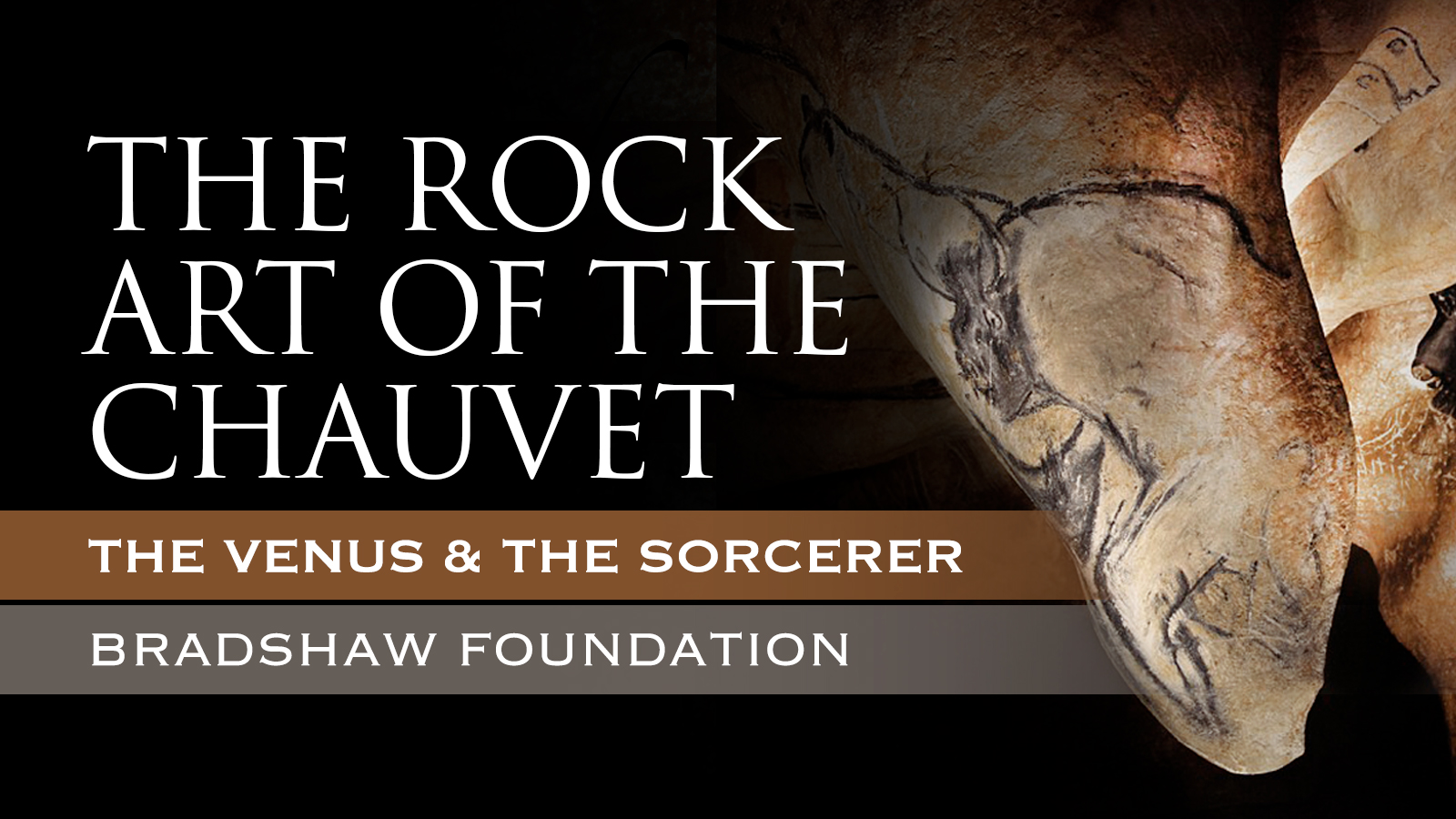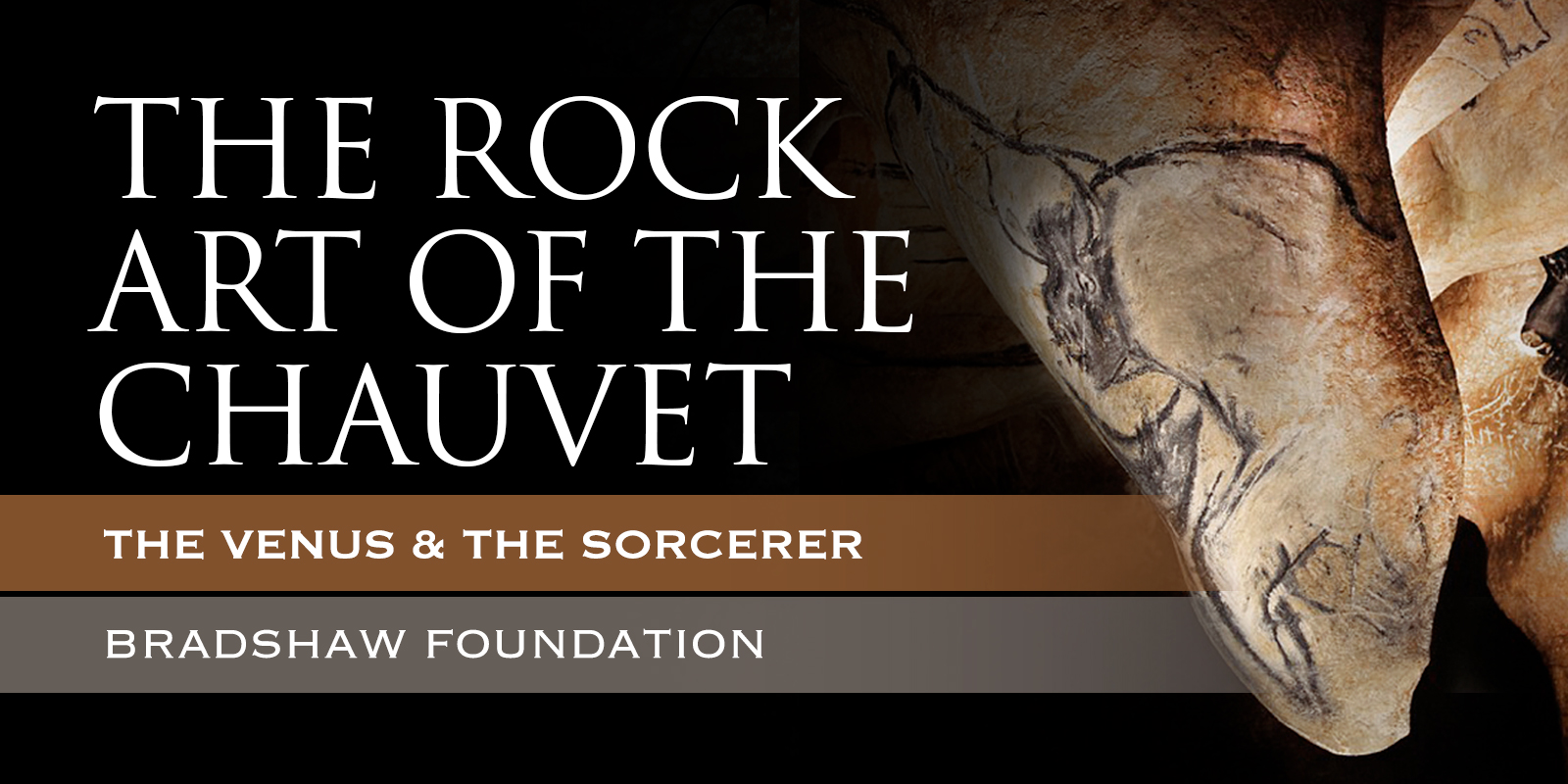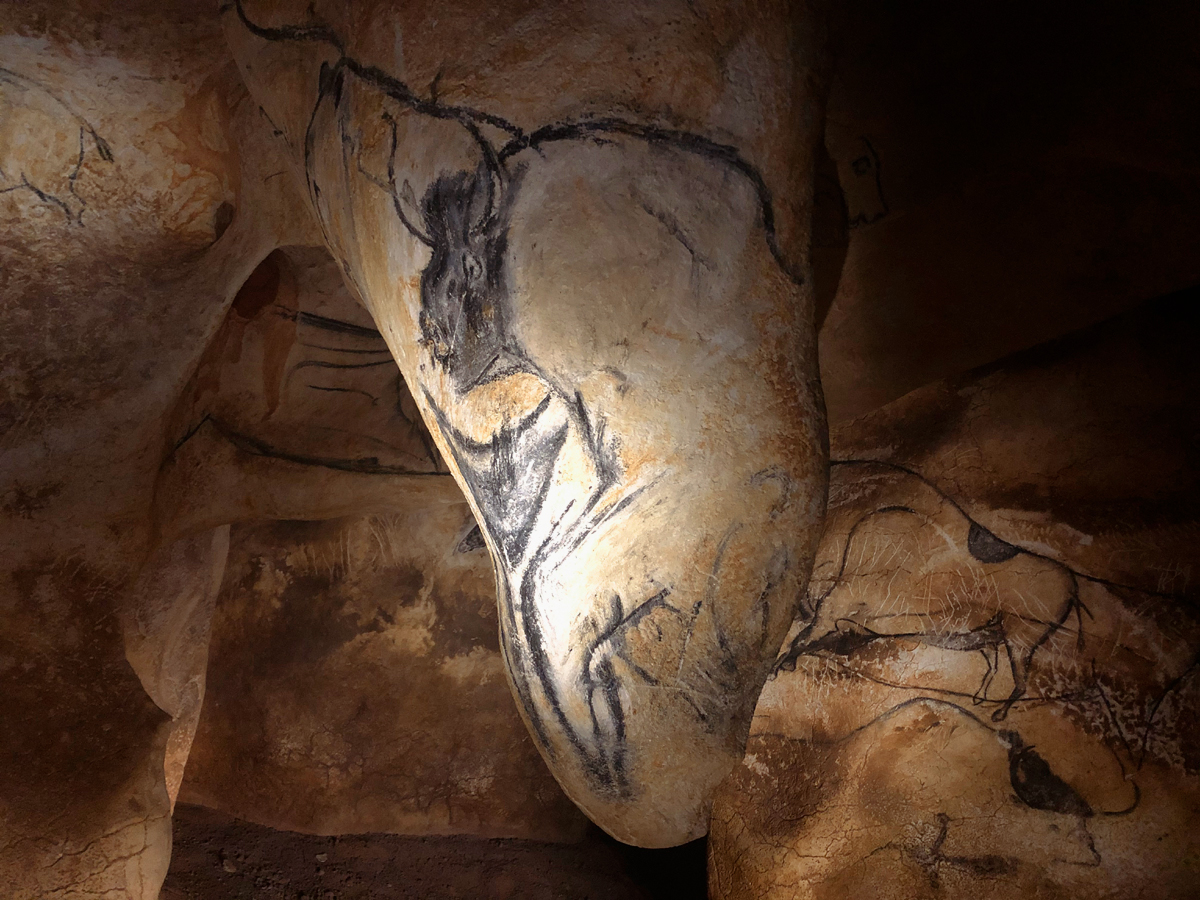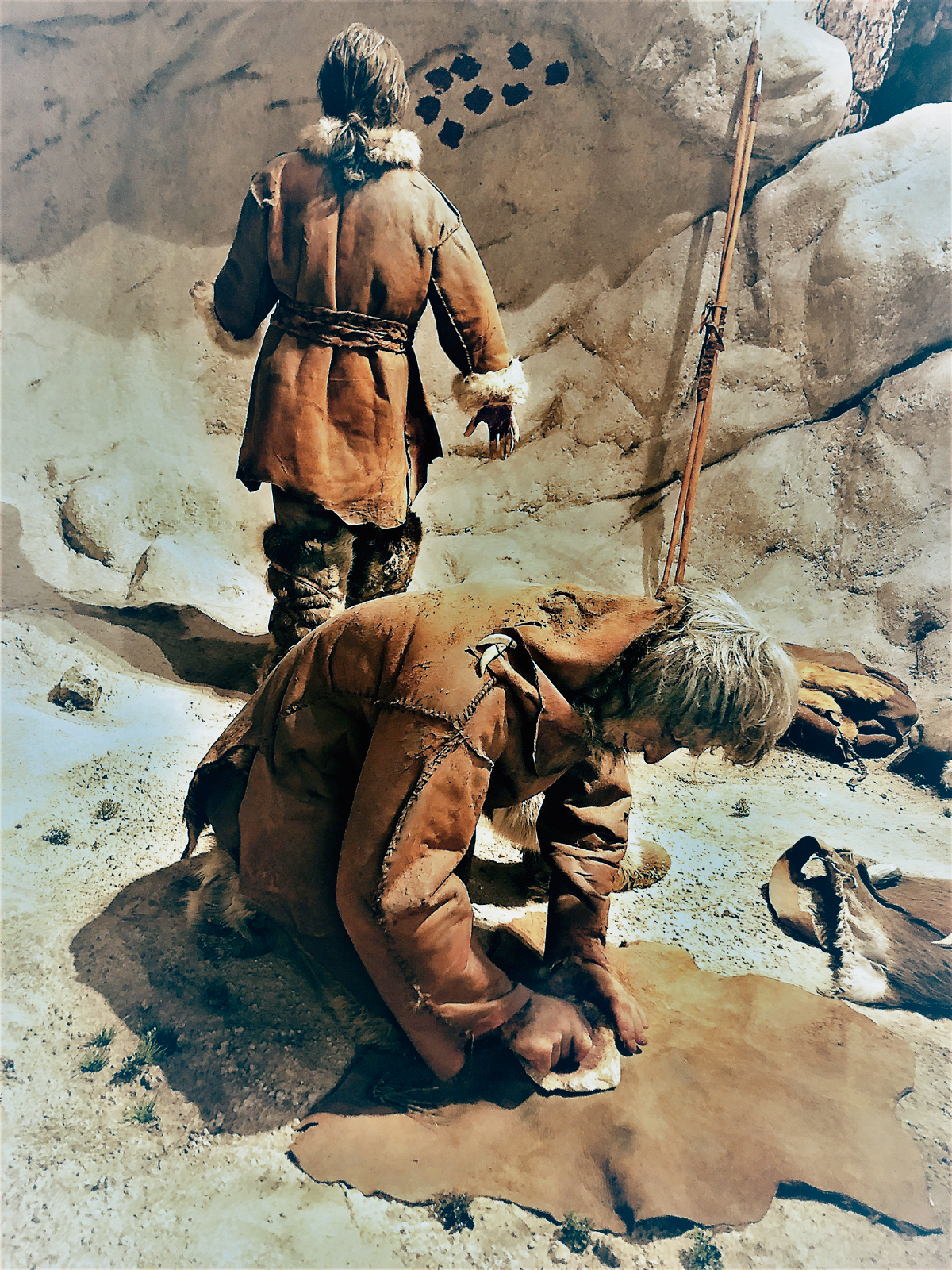


The last and deepest of the Chauvet Cave chambers, the Salle du Fond, is the home of the Venus and the Sorcerer. From the ceiling of the chamber, which is nearly 7m (20ft) high, a vertical cone of limestone hangs down ending in a point 1.10m (3ft 6ins) off the floor. It is on this hanging outcrop that the Venus and the Sorcerer are drawn in black charcoal.
This Venus is absolutely classical and her proportions, the stylistic elements, the selection of the anatomical elements shown are all characteristically Aurignacian or Gravettian, as known from the small Venus statues of Central and Eastern Europe.
The Venus is not isolated. Other lines and realistic representations are associated with her, directly on the outcrop. Higher and to the left of the Venus are two felines, a mammoth and a small musk ox. To the right of the Venus is the "Sorcerer" or man-bison. The relation of the Venus to the Sorcerer cannot be simply fortuitous.
The Venus is the earliest of the designs. The feline on the left, the Sorcerer, and the multiple lines on the right, are all painted or engraved later. Their creation entailed a voluntary and selective local destruction of parts of the body of the Venus, the most obvious spot being at one of the upper extremities of the pubic triangle.
Even more surprising is the voluntary absence of any super imposition. Neither the Sorcerer nor the large feline on the left cut across the Venus.
The Venus and the composition in which she occupies a privileged place are in a central topographic situation in the Salle du Fond. However, she is paradoxically peripheral in the over all design that seems centred on a beautiful horse lodged in a small chapel like niche to the left in the middle of the main panel of cave paintings.
Perhaps the female representation relates directly to the corridor to the chamber, which opens just behind her. Four other female representations limited to just the pubic triangle are in the cave; they are all in the system including the Galerie des Megaceros and the Salle du Fond, indicating each time the entrance to the adjacent cavities.
A cluster of convergent data suggests that the Venus is Aurignacian and that she was created in the first period of the decoration of the Chauvet Cave.
A full report on the Venus can be read in INORA No 29 2001 Newsletter on Rock Art Edited by Dr Jean Clottes.
The artists of Chauvet Cave used a great diversity of techniques to create its equally diverse artworks, ranging from monumental to very discrete. It is thus certain that many artists with varied and distinct skills participated in this endeavor. We can distinguish prodigious artists who mastered form, color, and figurative rendering on the rock walls from others who drew simple, less visible, or even invisible, images. All these artists nonetheless adhered to same rules in their depictions of animals, humans, and geometric signs, and we can thus see that they shared the same culture and skills but not the same experience in creating art on cave walls. While there is, therefore, no reason to believe that all the artists were specialists, those who created the masterpieces certainly were, and they existed alongside the specialized flint knappers of this time, 36,000 years ago.
→ Rock Art on UNESCO’s World Heritage List
→ Colloquium - France/Spain October 2019
→ L'Atlas de la grotte Chauvet-Pont d'Arc
→ The Final Passage
→ The Final Passage - FAQ
→ France Rock Art & Cave Paintings Archive
→ Chauvet Cave
→ Lascaux Cave
→ Niaux Cave
→ Cosquer Cave
→ Rouffignac Cave - Cave of the Hundred Mammoths
→ Bison of Tuc D'Audoubert
→ Geometric Signs & Symbols in Rock Art
→ The Paleolithic Cave Art of France
→ Dr Jean Clottes
→ Bradshaw Foundation
→ Rock Art Network
















